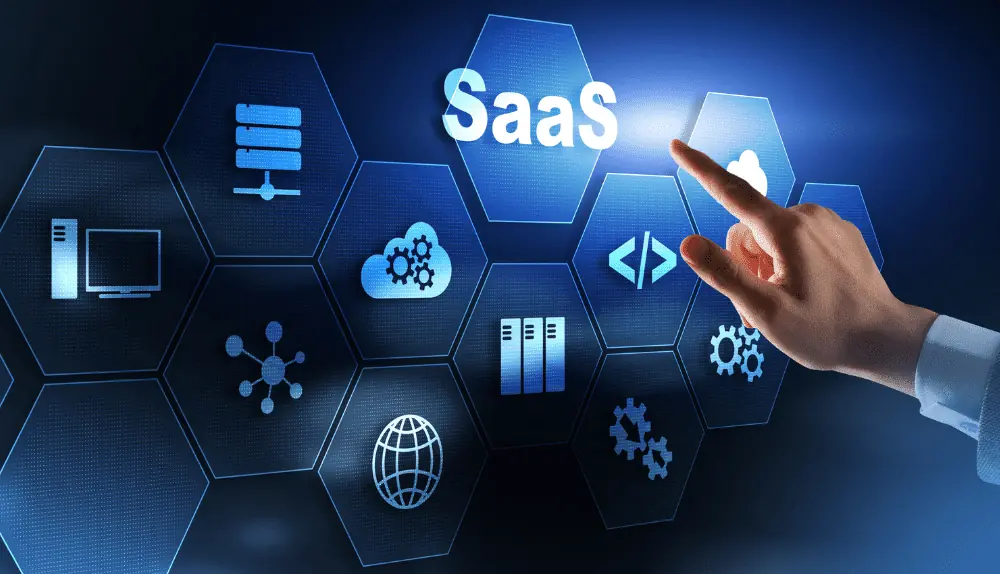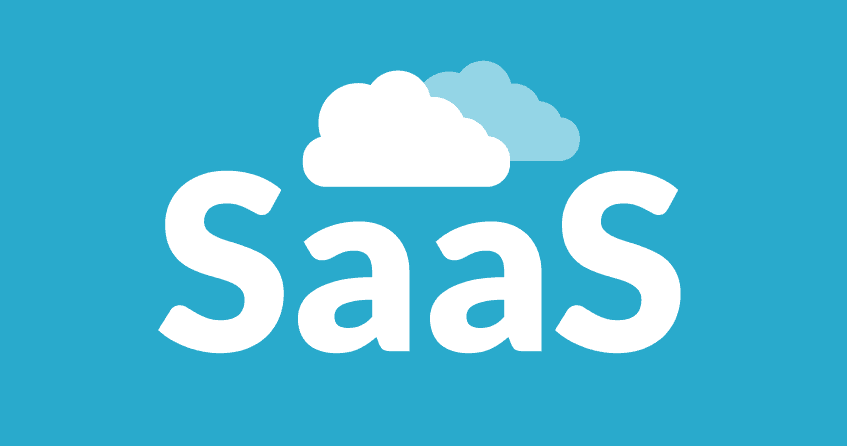In the rapidly evolving landscape of technology, innovative solutions continue to reshape industries and redefine the way we work in 2024. Among these advancements, Vertical Software-as-a-Service (SaaS) emerges as a game-changer, revolutionizing the software industry and bringing tailored solutions to specific vertical markets. Gone are the days of generic software that attempts to cater to every industry’s needs. Vertical Software-as-a-Service takes a targeted approach, providing specialized software designed exclusively for niche industries, allowing businesses to unlock new levels of efficiency, productivity, and growth.
In this dynamic world of vertical software, each sector finds its unique set of tools and functionalities, enabling businesses to thrive in their respective domains. Join us on a journey to discover the exciting realm of Vertical Software-as-a-Service and witness how it reshapes industries with its laser-focused approach and transformative potential in 2024.
What is Vertical Software-as-a-Service?
Vertical Software-as-a-Service (SaaS) is a specialized form of cloud-based software that caters to specific industries or niche markets. Unlike traditional horizontal SaaS solutions that offer generic functionality applicable across various industries, vertical Software-as-a-Service takes a targeted approach by addressing the specific needs, challenges, and workflows of a particular vertical market.
Vertical SaaS providers develop software applications that are tailored to meet the unique requirements of industries such as healthcare, real estate, manufacturing, finance, hospitality, and more. These solutions are designed to streamline industry-specific processes, automate tasks, enhance collaboration, and provide valuable insights and analytics relevant to that particular sector.
By focusing on a specific vertical, these specialized SaaS applications offer deep domain expertise and industry-specific features, resulting in greater efficiency, productivity, and improved outcomes. They eliminate the need for costly and time-consuming customization, as the software is already optimized for the specific needs of the industry. Moreover, vertical Software-as-a-Service solutions often integrate with other tools and systems commonly used in the industry, further enhancing their effectiveness and seamless integration into existing workflows.
Overall, vertical Software-as-a-Service empowers businesses within niche markets to leverage tailored software solutions, driving growth, innovation, and competitive advantage within their specific industry.
What are the Challenges of Vertical SaaS?

While Vertical Software-as-a-Service (SaaS) brings numerous benefits to specific industries or niche markets, it also faces certain challenges that need to be addressed. From the limited market size and scalability to industry complexity and customization, vertical Software-as-a-Service providers encounter unique obstacles that require careful navigation.
Additionally, competing with established players, ensuring data integration and interoperability, staying updated with industry knowledge, and acquiring and retaining customers present ongoing challenges in the vertical Software-as-a-Service landscape. By understanding and proactively addressing these challenges, vertical SaaS providers can position themselves for success and unlock the transformative potential of their specialized solutions within their targeted industries.
Limited Market Size and Scalability
One of the significant challenges faced by vertical Software-as-a-Service providers is the limited market size compared to horizontal SaaS. Since vertical SaaS focuses on specific industries or niche markets, the potential customer base is inherently smaller. This can impact the scalability and growth potential of the vertical SaaS company, as expansion opportunities may be constrained by the size of the target market.
Industry Complexity and Customization
Different industries often have complex and unique workflows, regulations, and compliance requirements. Developing vertical SaaS solutions that can effectively address these complexities while remaining flexible enough to accommodate customization needs can be challenging. Providers must invest significant time and resources to understand the intricacies of the industry, adapt their software accordingly, and provide configurable options to meet the specific needs of diverse customers within the vertical.
Competing with Established Players
Many vertical markets may already have established software vendors that have been serving the industry for a long time. These incumbents may have a strong customer base and brand reputation, making it difficult for new vertical SaaS entrants to gain traction. Breaking through the competition requires differentiation, innovation, and the ability to demonstrate superior value and benefits over existing solutions.
Data Integration and Interoperability
Vertical SaaS solutions often need to integrate with other systems and software used within the industry. Achieving seamless data integration and interoperability can be challenging, particularly when dealing with legacy systems or proprietary software that may not have standardized interfaces or APIs. Ensuring smooth data exchange between various software applications is crucial for providing a cohesive and comprehensive solution to customers.
Continuous Industry Knowledge and Updates
To remain relevant and competitive, vertical SaaS providers must stay up-to-date with the latest industry trends, regulations, and best practices. This requires ongoing research, collaboration with industry experts, and a commitment to continuous improvement and innovation. Failure to keep pace with industry changes can result in outdated software that fails to meet evolving customer needs, diminishing the value proposition of the vertical SaaS offering.
Customer Acquisition and Retention
Acquiring and retaining customers within a specific vertical can be challenging due to the limited market size and competition. Vertical SaaS providers must invest in targeted marketing strategies, industry-specific sales efforts, and building strong relationships with customers. They need to understand the unique pain points of the industry and effectively communicate how their solution can address those pain points and deliver tangible benefits.
By recognizing these challenges and proactively addressing them, vertical SaaS providers can navigate the complex landscape, deliver value to their customers, and establish a strong foothold within their respective industries.
Benefits of Vertical SaaS

Industry-Specific Functionality
Vertical SaaS offers industry-specific functionality and features tailored to the unique needs of a particular sector. By focusing on the specific requirements and workflows of the industry, these solutions provide a more targeted and efficient user experience. Businesses can benefit from ready-to-use software that is designed to address their specific pain points, resulting in improved productivity, streamlined processes, and enhanced operational efficiency.
Faster Implementation and Time-to-Value
Vertical SaaS solutions are built with industry best practices in mind, allowing for quicker implementation and time-to-value. Since these solutions are specifically designed for a particular industry, they often require minimal customization and configuration, enabling businesses to deploy and start using the software faster. This accelerated implementation process reduces the time and resources required to get up and running, allowing organizations to realize the benefits of the software more quickly.
Reduced Total Cost of Ownership (TCO)
Vertical SaaS can offer cost advantages over traditional on-premises software or generic SaaS solutions. By focusing on a specific industry, vertical SaaS providers can develop software that meets the specific needs of that sector, eliminating unnecessary features and functionalities. This targeted approach helps reduce costs associated with software licensing, maintenance, and ongoing support. Additionally, businesses can avoid the expenses related to building and maintaining in-house software solutions, such as infrastructure costs and dedicated IT teams.
Deep Industry Expertise
Vertical SaaS providers specialize in a particular industry, allowing them to accumulate deep domain expertise over time. They understand the unique challenges, regulations, and trends of the industry, and their software reflects that knowledge. This expertise translates into more effective and relevant solutions for businesses, as the software is built with a deep understanding of the industry’s specific requirements, workflows, and compliance needs. The provider’s industry knowledge and experience also extend to customer support, ensuring that businesses receive tailored assistance and guidance when needed.
Seamless Integration and Collaboration
Vertical SaaS solutions often integrate with other software applications commonly used within the industry. This seamless integration enables businesses to create a unified ecosystem of tools, allowing for smoother data exchange, improved collaboration, and a holistic view of operations. By connecting different software systems, vertical SaaS enhances efficiency, reduces manual data entry, and provides a comprehensive overview of business processes, ultimately leading to better decision-making and improved outcomes.
Scalability and Flexibility
Vertical SaaS solutions can scale alongside a business as it grows. Whether it’s accommodating an expanding customer base, adding new locations, or adapting to evolving industry trends, vertical SaaS provides the scalability and flexibility to meet changing needs. Providers can continuously update and enhance their solutions to align with industry developments and customer feedback, ensuring that businesses have access to the latest features and functionalities without disruptive migrations or major infrastructure investments.
Vertical SaaS empowers businesses within specific industries to leverage specialized software solutions that address their unique challenges and requirements. By offering industry-specific functionality, faster implementation, cost savings, deep expertise, seamless integration, and scalability, vertical SaaS brings significant benefits that enable organizations to optimize their operations, drive growth, and stay competitive within their respective industries.
Best Practices for Vertical SaaS

To thrive in the competitive landscape of vertical Software-as-a-Service (SaaS), it is essential to adopt industry-specific best practices. By leveraging these proven strategies, vertical SaaS providers can effectively address industry challenges, deliver value to customers, and build a strong reputation within their target market. From in-depth industry research and user-centric design to seamless integration and continuous improvement, following these best practices ensures the success and growth of vertical SaaS offerings.
In-Depth Industry Research
To successfully develop and market a vertical SaaS solution, it is crucial to conduct thorough research on the target industry. Gain a deep understanding of its unique challenges, pain points, regulatory requirements, and emerging trends. Engage with industry experts, potential customers, and stakeholders to gather insights and validate your assumptions. This research forms the foundation for building a robust and relevant vertical SaaS offering.
Focus on Specific Industry Needs
Vertical SaaS should prioritize addressing the specific needs of the target industry. Tailor the software’s features, functionalities, and user experience to align with the industry’s workflows and requirements. Avoid a one-size-fits-all approach and ensure the solution provides tangible value and solves industry-specific pain points. Continuous engagement with industry stakeholders helps to refine and enhance the software’s relevance.
User-Centric Design
Usability and user experience are critical factors in the success of any software. Invest in user-centric design principles to create an intuitive and easy-to-use interface. Conduct user testing and gather feedback from industry professionals to refine and optimize the user experience. Strive for simplicity and clarity, ensuring users can quickly navigate and leverage the software’s capabilities without extensive training or support.
Seamless Integration and Interoperability
Vertical SaaS solutions should seamlessly integrate with other software systems commonly used within the industry. Ensure the solution supports standard data formats and APIs to enable smooth data exchange and interoperability. Collaboration with industry partners and integration with relevant tools enhance the value proposition of the vertical SaaS offering, making it an integral part of the industry ecosystem.
Scalability and Flexibility
Design the architecture of the vertical SaaS solution with scalability and flexibility in mind. Anticipate the growing needs of the industry and ensure that the software can handle increasing data volumes, user demand, and expanding customer bases. Adopt cloud-native technologies, scalable infrastructure, and modular design principles to accommodate future growth and evolving industry requirements.
Security and Compliance
Vertical SaaS providers must prioritize data security and compliance, especially in industries with strict regulatory frameworks. Implement robust security measures, data encryption, access controls, and compliance monitoring to safeguard sensitive information. Stay updated with industry-specific regulations and standards, ensuring that the software remains compliant and supports the security needs of customers.
Continuous Improvement and Innovation
Maintain a mindset of continuous improvement and innovation. Regularly update the vertical SaaS solution based on customer feedback, market changes, and emerging technologies. Engage with customers through user forums, feedback channels, and user groups to gather insights and identify areas for enhancement. Proactively seek opportunities to introduce new features, functionality, and value-added services to stay ahead of the competition.
Strong Customer Support and Training
Offer exceptional customer support and training to ensure that customers can maximize the benefits of the vertical SaaS solution. Provide comprehensive documentation, online resources, and video tutorials to assist users in onboarding and utilizing the software effectively. Establish channels for prompt customer support, addressing queries, and resolving issues in a timely manner.
Why do Businesses Need Vertical SaaS?
Vertical Software-as-a-Service (SaaS) is becoming increasingly essential for businesses operating within specific industries or niche markets. By leveraging industry-specific expertise and tailored functionality, vertical SaaS enables businesses to streamline operations, enhance efficiency, and stay competitive. With faster implementation, cost-effectiveness, scalability, and seamless integration, vertical SaaS provides businesses with the tools they need to optimize processes, meet industry standards, and drive growth. By adopting vertical SaaS solutions, businesses can benefit from industry-specific knowledge, gain a competitive advantage, and unlock their full potential within their respective markets.
Industry Expertise
Vertical SaaS providers specialize in serving specific industries and possess deep domain expertise. Their solutions are built with a comprehensive understanding of the industry’s unique challenges, workflows, and regulatory requirements. By leveraging vertical SaaS, businesses can benefit from industry-specific knowledge and best practices embedded within the software, ensuring their operations align with industry standards and regulations.
Tailored Functionality
Vertical SaaS offers industry-specific functionality and features that address the unique needs of businesses within a particular sector. Unlike generic software solutions, vertical SaaS is purpose-built to cater to the specific pain points and requirements of the target industry. This tailored approach provides businesses with tools and capabilities that streamline processes, automate tasks, and optimize operations in a way that generic solutions cannot.
Enhanced Efficiency and Productivity
Vertical SaaS solutions are designed to improve operational efficiency and boost productivity within a specific industry. By automating manual tasks, streamlining workflows, and providing specialized tools, businesses can optimize their processes and eliminate inefficiencies. Vertical SaaS enables teams to focus on core business activities, leading to increased productivity, cost savings, and improved overall performance.
Faster Time-to-Market
Vertical SaaS solutions are pre-configured to suit the needs of a specific industry, which enables businesses to implement the software rapidly. Compared to developing custom software or deploying generic solutions, vertical SaaS significantly reduces the time and effort required for implementation. This faster time-to-market allows businesses to quickly start utilizing the software, realizing its benefits sooner and gaining a competitive edge.
Cost-Effectiveness
Vertical SaaS eliminates the need for businesses to invest in developing and maintaining their own in-house software solutions. Instead, businesses can access industry-specific software through a subscription-based model, paying only for the features and functionality they require. This subscription-based pricing structure reduces upfront costs, lowers the total cost of ownership, and enables businesses to allocate their resources more efficiently.
Scalability and Flexibility
Vertical SaaS solutions are designed to scale alongside businesses as they grow and evolve. They can accommodate increased data volume, expanding customer bases, and changing business needs. Vertical SaaS offers the flexibility to adapt to market dynamics, new regulations, and emerging industry trends, allowing businesses to remain agile and seize opportunities without being limited by outdated or rigid software systems.
Seamless Integration and Collaboration
Vertical SaaS solutions often integrate with other industry-specific tools and systems, facilitating seamless data exchange and collaboration. This integration eliminates silos and improves communication and coordination among teams and departments. By centralizing data and providing a unified view of operations, vertical SaaS promotes collaboration, enhances decision-making, and fosters a more cohesive and efficient business ecosystem.
In summary, businesses need vertical SaaS to leverage industry expertise, benefit from tailored functionality, enhance efficiency and productivity, accelerate time-to-market, reduce costs, achieve scalability and flexibility, and enable seamless integration and collaboration. By adopting vertical SaaS solutions, businesses can optimize their operations, stay competitive, and drive growth within their respective industries.
Final Words
In conclusion, Vertical Software-as-a-Service (SaaS) has emerged as a powerful solution for businesses operating within specific industries. By addressing industry-specific challenges, providing tailored functionality, and leveraging industry expertise, vertical SaaS enables businesses to optimize operations, enhance efficiency, and drive growth. The benefits of vertical SaaS, including cost-effectiveness, faster implementation, scalability, and seamless integration, make it a valuable tool for businesses seeking to stay competitive in their respective markets. By embracing vertical SaaS, businesses can leverage industry-specific knowledge, streamline processes, and unlock their full potential, ultimately positioning themselves for success in an increasingly specialized and demanding business landscape.
Frequently Asked Questions (FAQs)
How is Vertical SaaS different from horizontal SaaS?
Vertical SaaS and horizontal SaaS differ in terms of their target audience and scope. While vertical SaaS caters to specific industries or niche markets, horizontal SaaS offers solutions that can be applied across various industries. Vertical SaaS provides specialized functionality and customization options to meet industry-specific needs, whereas horizontal SaaS offers more generalized features and serves a broader customer base.
How can Vertical SaaS benefit my business?
Vertical SaaS can benefit your business by providing specialized software solutions that address your industry-specific needs and challenges. It can streamline operations, automate tasks, improve productivity, and enhance decision-making within your industry. Vertical SaaS also reduces upfront costs, offers faster time-to-value, and provides scalability and flexibility to adapt to changing business requirements.
How do I choose the right Vertical SaaS solution for my business?
Choosing the right Vertical SaaS solution involves considering factors such as your industry’s specific requirements, the functionality, and features offered by the solution, scalability options, integration capabilities, security measures, customer support, and pricing models. It’s important to evaluate multiple options, conduct demos, and seek recommendations from industry peers or experts to make an informed decision.
Is Vertical SaaS suitable for small businesses or startups?
Yes, Vertical SaaS can be highly beneficial for small businesses and startups. It allows them to access industry-specific functionality without the need for significant upfront investments in developing custom software or acquiring expensive on-premises systems. Vertical SaaS offers cost-effective subscription-based pricing models, faster implementation, and scalability to accommodate growth, making it a viable option for businesses of all sizes.

